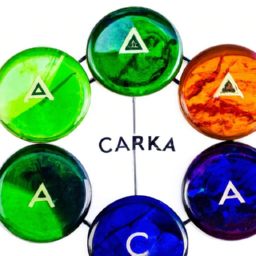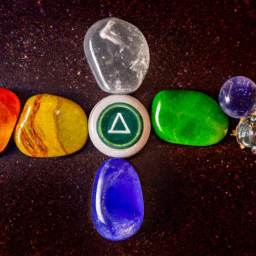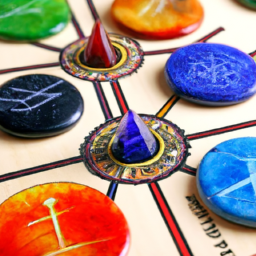Chakra yoga is a transformative practice that focuses on balancing the energy centers in our bodies, known as chakras. These seven chakras, located along the spine, are believed to be responsible for our physical, emotional, and spiritual well-being. When these chakras are blocked or imbalanced, it can lead to a variety of physical and mental health issues. Therefore, understanding and balancing our chakras through yoga can have a profound impact on our overall well-being.
The Seven Chakras
Each chakra is associated with a specific color, element, and corresponding physical and emotional aspects. Understanding the characteristics of each chakra can help us identify which chakras may need more attention and balance in our yoga practice.
- Root Chakra (Muladhara): Located at the base of the spine, this chakra is associated with the color red and the element of earth. It represents our sense of security, stability, and grounding.
- Sacral Chakra (Svadhishthana): Located just below the navel, this chakra is associated with the color orange and the element of water. It represents our creativity, sexuality, and emotions.
- Solar Plexus Chakra (Manipura): Located at the upper abdomen, this chakra is associated with the color yellow and the element of fire. It represents our personal power, confidence, and self-esteem.
- Heart Chakra (Anahata): Located at the center of the chest, this chakra is associated with the color green and the element of air. It represents our ability to give and receive love, compassion, and forgiveness.
- Throat Chakra (Vishuddha): Located at the throat, this chakra is associated with the color blue and the element of sound. It represents our ability to communicate effectively and express ourselves authentically.
- Third Eye Chakra (Ajna): Located between the eyebrows, this chakra is associated with the color indigo and the element of light. It represents our intuition, imagination, and spiritual awareness.
- Crown Chakra (Sahasrara): Located at the top of the head, this chakra is associated with the color violet and the element of thought. It represents our connection to our higher self, spirituality, and consciousness.
Balancing Chakras Through Yoga
Chakra yoga is a holistic approach to balancing and healing our chakras. It combines physical postures, breathwork, meditation, and visualization techniques to awaken and activate the energy flow in our chakras. By practicing specific yoga poses and techniques designed for each chakra, we can unblock and rebalance the corresponding energy center.
Here are some yoga poses and practices that can help balance each chakra:
- Root Chakra: Poses that involve grounding and connecting to the earth, such as tree pose, mountain pose, and seated forward bend, can help balance this chakra. Pranayama (breathwork) practices like alternate nostril breathing and chanting “Lam” can also be beneficial.
- Sacral Chakra: Hip-opening poses, such as pigeon pose, cobra pose, and goddess pose, can help balance this chakra. Breathwork techniques like kapalabhati (skull-shining breath) and chanting “Vam” can also be effective.
- Solar Plexus Chakra: Core-strengthening poses, such as boat pose, warrior III, and twisted lunge, can help balance this chakra. Breathwork practices like uddiyana bandha (abdominal lock) and chanting “Ram” can also be helpful.
- Heart Chakra: Heart-opening poses, such as camel pose, bridge pose, and cow pose, can help balance this chakra. Pranayama practices like deep belly breathing and chanting “Yam” can also be beneficial.
- Throat Chakra: Poses that open and stretch the neck, such as fish pose, shoulder stand, and plow pose, can help balance this chakra. Breathwork techniques like lion’s breath and chanting “Ham” can also be effective.
- Third Eye Chakra: Poses that involve balancing and focusing the gaze, such as warrior II, eagle pose, and tree pose, can help balance this chakra. Meditation practices like trataka (candle gazing) and visualization techniques can also be beneficial.
- Crown Chakra: Inverted poses, such as headstand, handstand, and downward facing dog, can help balance this chakra. Meditation practices like chanting “Om” and visualizing a bright white light at the crown of the head can also be helpful.
Incorporating Chakra Yoga Into Your Practice
It is essential to approach chakra yoga with intention and self-awareness. Before beginning your practice, take a moment to identify which chakra(s) may need more attention. You can also use a chakra chart or journal to track your progress and note any changes you may experience.
Remember to listen to your body and modify or skip poses if they do not feel comfortable for you. Chakra yoga is a personal practice, and each of us may need different poses and techniques to balance our energy centers. Therefore, trust your intuition and focus on cultivating a deep mind-body connection.
In conclusion, balancing our chakras through yoga can have a transformative effect on our lives. By working on our energy centers, we can improve our physical, emotional, and spiritual well-being. So, the next time you step onto your yoga mat, remember to incorporate chakra-specific poses and techniques into your practice for a more balanced and harmonious experience.





This looks like a great way to reduce stress and anxiety
NancyBrib: I’m totally doing this now, thanks for the tips!
Great post! Chakra Yoga can be a powerful tool for cleansing the body and mind, creating a sense of balance and inner peace. #chakraYoga #yoga #balance #peace
Absolutely! Chakra Yoga is so great for working through energy blocks and creating flow in the body. #chakraYoga #yoga #mindfulness #flow